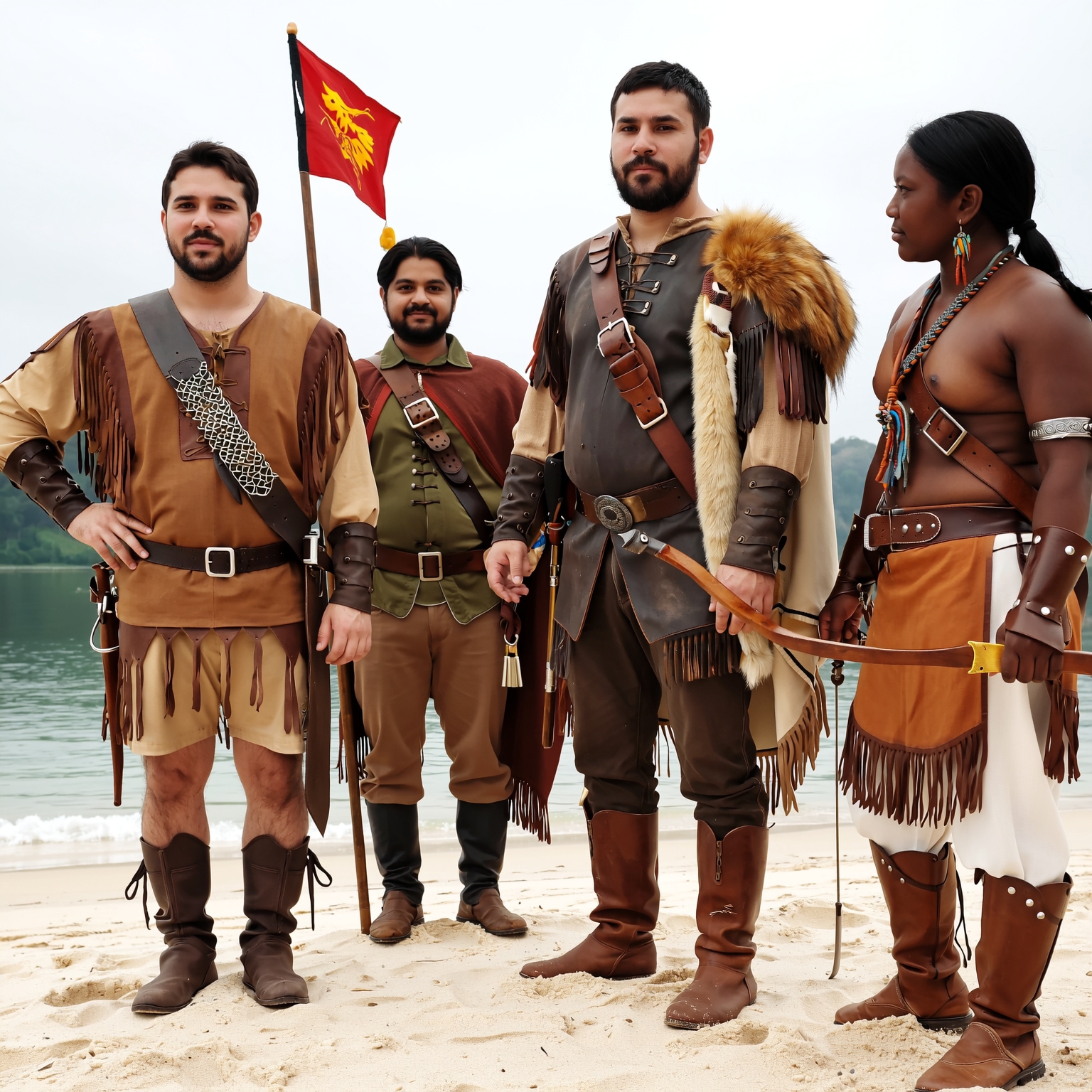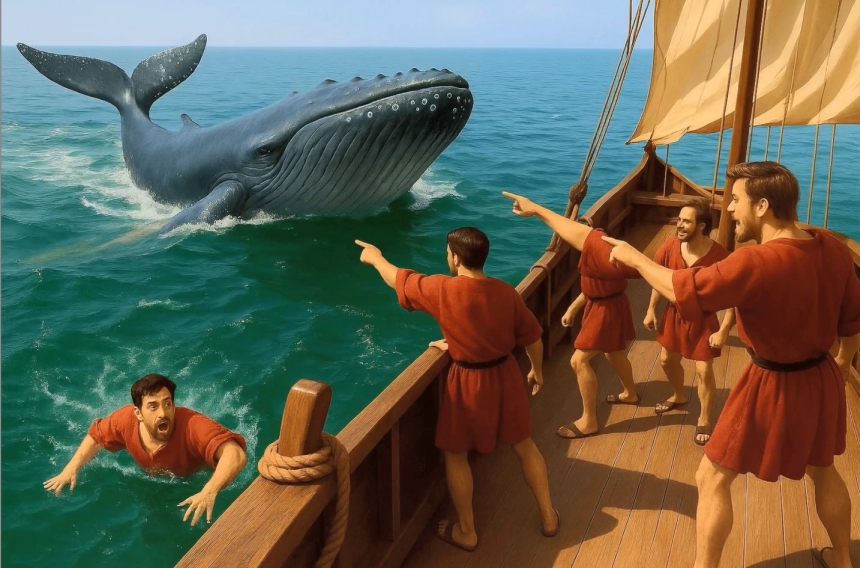
The Welsh in America: The Legend of Prince Madoc’s 12th-Century Voyage
One of the most enduring and romantic tales of early exploration claims that the Welsh reached the shores of America more than 300 years before Columbus. According to legend, Prince Madoc ab Owain Gwynedd, a Welsh nobleman, sailed with a fleet of ships westward across the Atlantic in the late 12th century—around 1170— to seek new land, escaping the chaos following his father’s death, that led to internal conflicts and a civil war. The prince founded a colony somewhere along the coast of what is now the southeastern United States. Though often regarded as folklore, the story of Madoc has fascinated historians, explorers, and antiquarians for centuries, and has left a curious imprint on early American mythology and legends.
The story first appeared in Welsh literature and oral tradition. Madoc (also spelled Madog) was said to be one of the many sons of Owain Gwynedd, a powerful ruler of North Wales. After his father’s death in 1170, a bitter dispute broke out among the heirs. Disillusioned by the civil war, he supposedly took to the sea with a small fleet of ships, seeking peace and new lands far from the strife at home. According to the legend, Madoc sailed west into the unknown Atlantic and discovered a fair fertile land across the ocean. Some later chronicles mentioned he spoke of ” a fair and fertile country beyond the western ocean”. He and his followers established a settlement there before returning to Wales to gather more colonists. He then embarked on a second voyage, never to be heard from again.
Colonial Claims and the Welsh Connection
The story gained new life in the 16th century, particularly after England began competing with Spain for dominance in the New World. English writers such as Richard Hakluyt and Humphrey Llwyd promoted the tale of Madoc’s voyage as evidence that the British—through their Welsh kin—had discovered America before the Spanish. This narrative conveniently served as a political tool to justify English colonization. In 1583, Queen Elizabeth I’s advisors even cited the Madoc story as a legal basis for English claims to North America, asserting that the land had already been “discovered” by a subject of the British Isles centuries before Columbus.
Native American “Welsh Indians”
In later centuries, frontier explorers and settlers fueled speculation that some Native American tribes were descendants of Madoc’s lost colonists. Reports circulated of “white Indians” or tribes speaking a language that resembled Welsh. The Mandan people of the upper Missouri River, in particular, were often associated with these claims in the 18th and 19th centuries.The Mandan were noted for their lighter skin tones, blue eyes, and certain other European-like features, which led explorers such as George Catlin, famous lawyer, author, and artist of Native American Indians portraits, and John Evans, a Welshman and explorer in America who produced an early map of the Missouri River, to suggest a Welsh ancestry. Catlin even believed that Welsh-speaking settlers may have intermarried with the Mandan, preserving fragments of language, customs, and culture. However, linguistic and genetic research has since shown no real evidence of a Welsh link.
Searching for Madoc’s Landfall
Theories about where Madoc may have landed range widely—from Mobile Bay, Alabama, to the Gulf of Mexico, the Mississippi River, and even farther north along the Atlantic seaboard. Some 19th-century historians claimed to find old stone fortifications and inscriptions in the Mississippi Valley that they attributed to the Welsh voyagers. Others proposed that Madoc’s fleet may have explored inland via river systems, establishing small settlements that later disappeared.
Archaeological evidence, however, remains elusive. None of the alleged “Welsh forts” have been confirmed to predate European colonization, and most can be explained by Native American or later frontier construction.
History or Myth?
While the legend of Madoc has been cherished in Welsh folklore and early American storytelling, historians today generally regard it as a myth—a symbolic tale of exploration rather than a record of actual events. The earliest written accounts appeared more than 400 years after the supposed voyage, and no contemporary medieval sources mention Madoc’s Atlantic crossing. Still, the story holds cultural significance. It reflects a deep-seated human fascination with discovery and the idea that bold explorers could reach new lands guided by curiosity and courage rather than conquest. The tale of Prince Madoc became part of both Welsh and American cultural identity, inspiring poets, ballads, and even monuments.

The Welsh-Speaking Indian Chief Who Saved a European’s Life
Among the many curious stories of early America’s frontier is that of a Native American chief who, according to legend, spoke fluent Welsh—and whose unlikely command of the language once saved a European traveler’s life. Though the story straddles the line between folklore and forgotten history, it reflects a fascinating intersection of two worlds: the Old Welsh legends of pre-Columbian voyages to the New World and the encounters between Native Americans and European settlers centuries later. Over the centuries, stories emerged from explorers and settlers who claimed to encounter Native Americans who spoke a strange language resembling Welsh. Some claimed to have found “Welsh Indians” along the Missouri River or near the Mandan tribe of present-day North Dakota—people with lighter skin and unfamiliar speech patterns.
One of the most enduring accounts tells of a European trader or explorer—sometimes said to be a Frenchman, other times an Englishman—who was captured by a Native American tribe during the 18th century. His captors, not understanding his pleas, prepared to execute him. Suddenly, their chief stepped forward and listened carefully to the foreigner’s desperate words.
When the man spoke again, the chief’s eyes widened. The sounds were familiar. The European, hearing a word that resembled “Cymraeg” (the Welsh word for the Welsh language), tried speaking a few phrases in Welsh—and to his astonishment, the chief replied fluently.
Through this unexpected connection, the man explained his peaceful intentions. The chief, recognizing a shared ancestral tongue, ordered that the man’s life be spared. The two reportedly spoke for hours, comparing words and traditions. The European later claimed that the chief told him stories passed down through generations—of a people who had come from across the great ocean in “boats with white wings,” long before other foreigners arrived.
As the story goes, when the European departed, he turned to the chief and said, in Welsh, “Bydded i Dduw dy fendithio”—“May God bless you.” The chief smiled, nodded, and answered in kind. And so, legend says, one man’s life was saved not by weapons or trade, but by the echo of a lost language carried across the sea.
Whether fact or folklore, the story of the Welsh-speaking Indian chief endures because it bridges two worlds rarely imagined together: the ancient Celtic seafarers of the Atlantic and the proud native nations of North America. It speaks to a shared human truth—that language can forge an instant bond, even across vast oceans and generations.
The Mysterious Historical Signs Claiming the Welsh Came to America in the 1100s
In Alabama, near Mobile Bay, a historical marker once commemorated “Madoc’s Landing,” recognizing the enduring legend of the Welsh prince who may have touched American shores. Also, along a quiet stretch of rural highway, an old historical sign stands as a curiosity—its weathered text declaring that “Welsh explorers reached America in the 12th century.” The sign refers to one of the most intriguing legends in pre-Columbian history: the tale of Prince Madoc (or Madog) of Wales, who is said to have sailed west across the Atlantic around 1170 AD, centuries before Columbus.
Several states have displayed or proposed historical markers commemorating the “Welsh discovery of America.” One notable example stood in Mobile, Alabama, where local tradition claims that Madoc’s fleet landed near Mobile Bay. The sign read:
“In memory of Prince Madoc, a Welsh explorer who, according to legend, landed on the shores of Mobile Bay in 1170 A.D., thus establishing early contact between Wales and the New World.”
Other markers and plaques have appeared over the years in Kentucky, Tennessee, and even in Fort Morgan, Alabama, often connected to local stories of “Welsh-speaking Indians” or mysterious ancient fortifications attributed to Madoc’s descendants.
Modern Skepticism
Modern historians and archaeologists have found no concrete evidence to support the story of Welsh exploration in the 12th century. No artifacts, ship remains, or verifiable linguistic traces link medieval Wales to pre-Columbian America. Most scholars now view the legend as a romantic myth—a product of national pride and imagination rather than historical fact. Some early frontier historians and missionaries while in America even claimed to have heard fragments of Welsh words in tribal speech, though linguists have long dismissed these as coincidences or mis-hearings.
Conclusion
Yet the legend endures, and the roadside signs that commemorate it continue to stir curiosity. They represent not only a tale of possible transatlantic adventure but also a symbol of how myth and memory blend into the American landscape. Today, the Madoc legend—and the signs that tell his story—are part of America’s rich patchwork of frontier folklore and speculative history. Whether or not Welsh ships ever touched the shores of Alabama or the Mississippi, the story itself reminds us of a universal human impulse: the urge to explore, to believe, and to connect the old world with the new.


